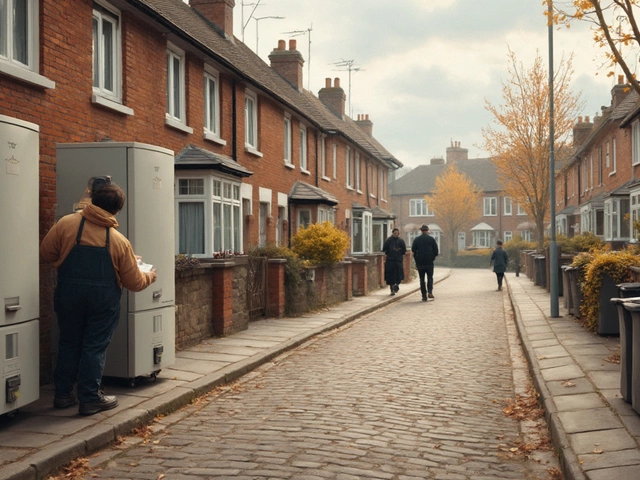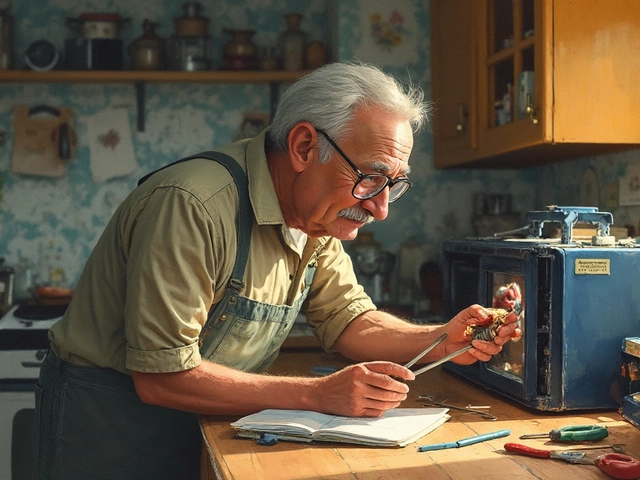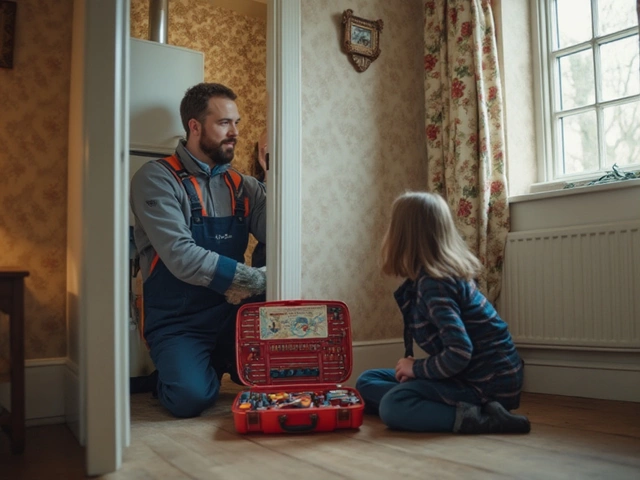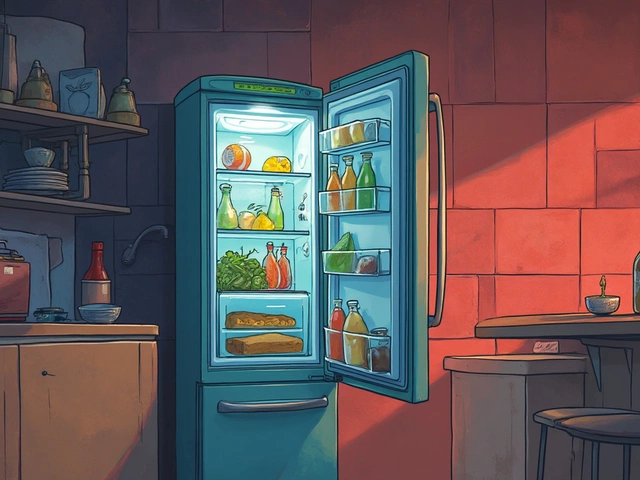When it comes to maintaining a comfortable home environment, heat pumps play a vital role in both heating and cooling. But what happens when temperatures start to plummet? At a certain point, heat pumps may lose their efficiency, struggling to keep up with the demands of heating your space.
It's essential to know the temperature thresholds for different types of heat pumps, so you can make informed decisions about your heating needs. Whether you're looking to install a new system or maximize the efficiency of an existing one, understanding temperature limits can help guide your choices and save on energy bills.
- Understanding Heat Pump Basics
- Ideal Temperature Range for Efficiency
- Signs of Reduced Efficiency
- Tips for Maximizing Heat Pump Performance
- When to Seek Professional Help
Understanding Heat Pump Basics
Let's bring some clarity to how these wonders of modern technology work. Essentially, a heat pump is no different from other more well-known appliances like refrigerators or air conditioners in its fundamental principle. At its core, a heat pump is designed to move heat from one place to another. It uses relatively common components like a compressor, two coils (one indoors and one outdoors), and a refrigerant to achieve this. The system extracts heat from outdoor air, even when it's cold, using it to warm up your home. In summer, it can be reversed, moving unwanted heat from inside to outside, thus keeping interiors cool.
For many households, investing in a heat pump can be a great way to save energy. The reason these devices are often lauded for efficiency is due to their ability to transfer heat rather than generating it from scratch like a conventional heater would. According to the U.S. Department of Energy, heat pump efficiency is generally much higher than that of the traditional furnace or boiler systems. In moderate climates, heat pumps can trim electricity use for heating by about 50% compared to electric resistance heating such as baseboard heaters. Homes with well-maintained heat pumps enjoy a consistent and comfortable temperature year-round without the swings in cost associated with some other heating systems.
"Heat pumps can be a game-changer for those looking to reduce their carbon footprint without sacrificing home comfort," states a comprehensive report by the International Energy Agency.Different types of heat pumps cater to different needs and environments. Air-source heat pumps, for instance, are common and suitable for areas with moderate climates. They've become remarkably efficient, even in regions typically deemed unsuitable due to harsh winter conditions, thanks to advancements in technology. Ground-source (or geothermal) heat pumps are another type and tend to be more efficient, albeit with a higher installation cost. They draw heat from the ground or water and can operate efficiently in a wider range of temperatures.
When considering a heat pump, it's crucial to factor in various elements such as the climate of your area, the insulation of your home, and your own heating and cooling needs. An understanding of the heat pump’s efficiency metrics, like the Heating Seasonal Performance Factor (HSPF) or the Seasonal Energy Efficiency Ratio (SEER), can also aid significantly in making a well-informed decision. On a broader scale, governments worldwide have recognized the benefits of adopting this technology, introducing rebates or incentives to catalyze their installation. A review of your country's specific programs may reveal some economic benefits to pairing with your pursuit of energy efficiency.
Ideal Temperature Range for Efficiency
Understanding the optimal temperature range for a heat pump's efficiency is crucial for ensuring your system operates smoothly and effectively. These devices are designed to work best in moderate climates but that doesn't mean they can't be useful in colder regions. On average, most heat pumps perform efficiently until temperatures dip below 40 degrees Fahrenheit (around 4.4 degrees Celsius). When outside temperatures fall lower, a heat pump might need some help, but it shouldn't be ineffective.
Air-source heat pumps, one of the most common types, start to lose their efficiency in colder weather mainly because they have less heat to extract from the air. This is especially true when the mercury falls below 25 to 30 degrees Fahrenheit (-3.9 to -1.1 degrees Celsius). However, thanks to modern technology, newer models are becoming more effective in conditions that were once challenging. Some advanced heat pumps now work productively at even lower temperatures.
The balance point is an important concept to grasp. It's the outdoor temperature at which the heating capacity of the heat pump matches the heating needs of the home. When temperatures drop below this point, supplementary heating is often necessary. This is a critical threshold for homeowners to understand, as it affects energy consumption and comfort levels during the colder months. Investing in a heat pump with a lower balance point can be beneficial for those living in chillier areas.
"In colder climates, a dual-fuel heat pump system can be a wise choice. It combines an electric heat pump with a gas furnace for greater efficiency and comfort," suggests HVAC expert and industry consultant, Alan J. McClenaghan.
Pumped hydro storage offers another angle on the efficiency story, providing a method to balance energy requirements and distribution. It's particularly relevant when heat pump systems are part of a broader strategy for renewable energy use in homes. Efficient operation is not only about the heat pump itself but also how it interacts with the entire home energy grid.
Many homeowners turn to energy-smart strategies such as optimizing insulation or using programmable thermostats to keep heat pumps performing optimally. Regular maintenance also plays a critical role in ensuring these systems operate within their ideal temperature range, along with keeping the filter clean and monitoring refrigerant levels. Should your heat pump seem to underperform, checking these elements first can save a lot of time and hassle.
By understanding the nuances of a heat pump's ideal temperature range for efficiency, homeowners can make informed decisions that enhance comfort while minimizing energy costs. It is all about finding that sweet spot where your system can work its magic without extra stress, ensuring warmth and pocket-friendly energy bills, even in the icy days ahead.
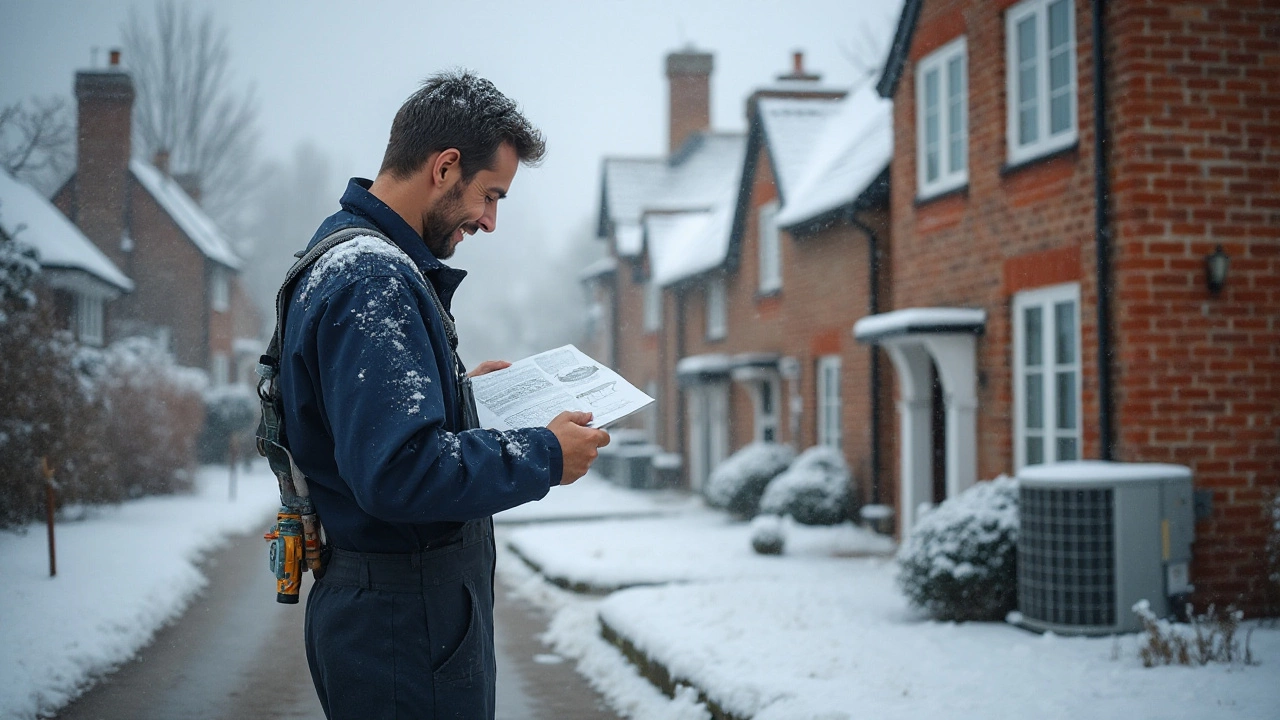
Signs of Reduced Efficiency
A heat pump is generally known for its ability to operate efficiently within certain temperature ranges. However, there are distinct signs when a system begins to lose its edge in performance. Homeowners may first notice a change in how their homes feel; rooms might not be as warm or as consistently heated as before. This shift can be subtle or sudden, and it's crucial to address it early to prevent larger system failures. One common indicator is when the unit runs almost continuously but fails to reach the desired temperature. This behavior should prompt a check on the thermostat settings and a review of the current outside temperatures. Excessive energy bills can also be a telltale sign—identifying a spike in energy usage could hint at a system that's working too hard to maintain comfort.
Another symptom of decreased heat pump efficiency is the presence of unusual noises or sounds coming from the unit. These noises could signal mechanical issues or operational stress, both of which reduce overall effectiveness. If you notice rattling, buzzing, or grinding, it's likely a component inside the unit is failing or has worn out. Cold drafts, while indoors, are another point of concern. A well-functioning heat pump should not only warm the space but also distribute that warmth evenly. If drafts are present, it could indicate problems with the heat exchanger or ductwork, potentially hindering the unit's ability to transfer heat efficiently. The consistency and quality of the air output should also be kept in check.
Frequent cycling on and off is another aspect that could indicate reduced efficiency. A continuously cycling unit could unnecessarily wear out components and decrease the lifespan of your heat pump. If this is occurring, a deeper look into the heat pump's defrost cycle and control settings may be required. Indoor coil frost is another apparent symptom; this can suggest a malfunction in the defrost system and requires immediate attention. It's crucial for homeowners to routinely examine their heat pumps, looking for ice buildup on the outdoor unit—an accumulation of frost more than half an inch is usually a red flag indicating inefficiency or potential malfunctions.
Monitoring and Maintenance Tips
Regularly checking your heat pump system for these signs can save you from larger problems down the line. Scheduling maintenance with a professional technician at least once a year can keep your system running optimally, ensuring it's ready to combat cold weather conditions. Cleaning and replacing filters is a straightforward step that can enhance performance. As a preventive measure, keeping your outdoor unit free from debris will allow unobstructed airflow, preventing operational strain. Trusting a qualified HVAC expert with comprehensive knowledge can help diagnose and solve underlying issues efficiently, maintaining the life of your heat pump while conserving energy.
Tips for Maximizing Heat Pump Performance
Making sure your heat pump is working at its best doesn't have to be complicated. With a few savvy strategies, you'll not only improve its efficiency but also extend its lifespan. The starting place is with regular maintenance — an area often overlooked. Frequent check-ups by a professional can help prevent minor issues from turning into significant, costly repairs. Experts recommend servicing your heat pump at least once a year, ideally before the peak heating season begins.
Keeping the system clean is another crucial step. Just like any HVAC equipment, a heat pump can suffer from poor performance due to dirty filters and blocked vents. Replace filters every few months to ensure the unit runs smoothly. Clean filters mean better airflow, which is vital for the efficiency of any heating system. Don’t forget to clear any debris around the outdoor unit, as this can also impede performance.
"The best way to optimize any heating system is regular cleaning and maintenance," says John Daly, an expert in HVAC systems. "Neglect often leads to more complex problems which can affect efficiency and output."
Efficient Temperature Settings
Setting your thermostat efficiently is a game-changer. When it gets cold outside, it might be tempting to crank up the thermostat, but a steady, moderate temperature ensures the unit doesn't work overtime. The aim is to keep the indoor temperature just comfortable enough without overburdening the pump. For instance, the Department of Energy suggests setting thermostats to around 20°C in winter during at-home hours, and lowering it when you're asleep or out.
Strategic Use of Auxiliary Heating
A thoughtful use of auxiliary heating can also play a key role. When the temperature outside drops significantly, some heat pumps use electrical resistance heaters to help out. While these systems can be essential, they are more energy-intensive. Use them judentially to avoid high electricity bills. You can also rely on supplementary heating methods like portable heaters or fireplaces to alleviate stress on your main system but be cautious always to prioritize safety.
| Maintenance Task | Frequency |
|---|---|
| Filter Replacement | Every 1-3 months |
| Professional Servicing | Yearly |
| Outdoor Unit Cleaning | Annually or as needed |
By following these practices, you’re sure to see your energy savings increase while ensuring your heat pump efficiency stays optimal. Remember that a well-looked-after system not only saves you money but also helps reduce your carbon footprint, contributing to a more sustainable planet.
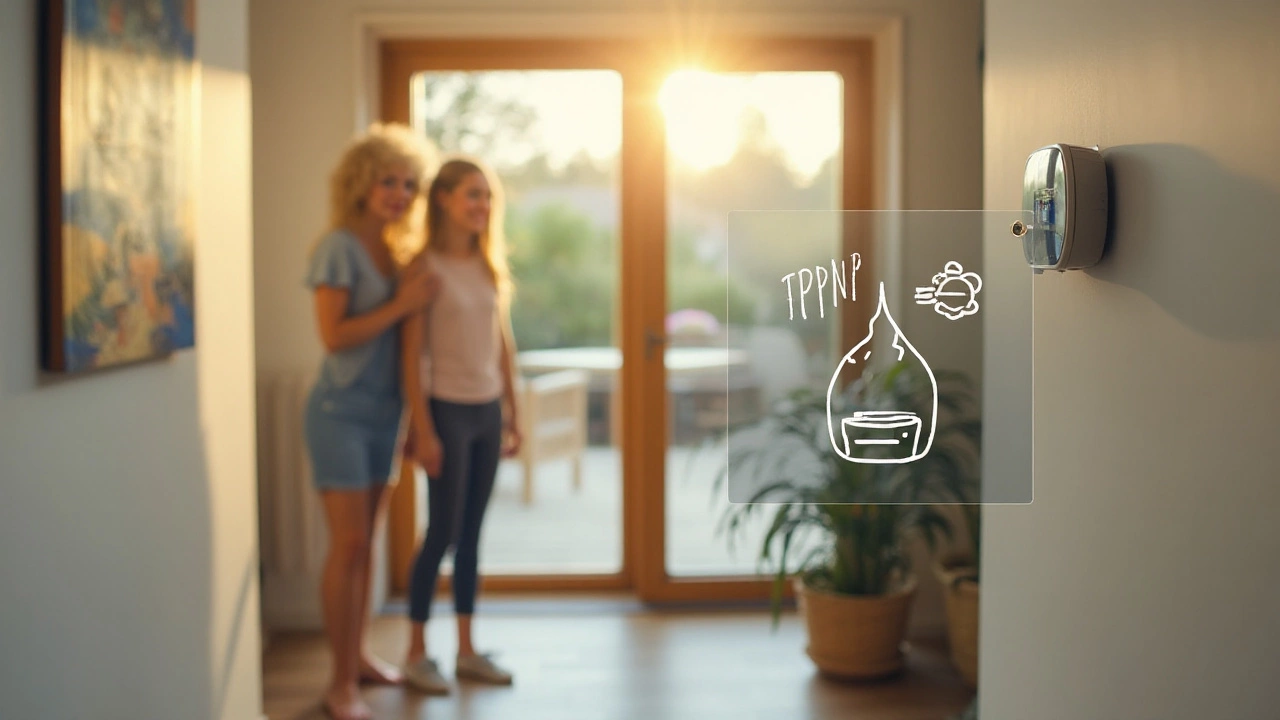
When to Seek Professional Help
Sometimes, troubleshooting a heat pump efficiency issue requires more than a personal touch. Recognizing the signs that your system needs professional intervention can save both time and money. One key indicator is if your heat pump doesn't switch modes or cycles too frequently. These issues might be pointing to potential problems within the thermostat, electrical components, or even the refrigerant levels. Attempting to fix such complex problems on your own might inadvertently lead to more damage or void any existing warranties you may hold.
If you've noticed that your energy bills are creeping up without any apparent reason, it might be another hint that your heat pump needs expert attention. Sometimes, inefficiency due to clogged filters or leaking ducts is easy to overlook without trained eyes. A professional inspection can assure all components function optimally. Another telltale sign to watch for is unusual noises such as rattling or clanking from your unit. These could indicate anything from loose parts to a failing compressor, often beyond casual DIY knowledge.
"Heat pumps should run quietly in the background. Any strange noises warrant an immediate check," advises Alex Turner, an HVAC expert with over twenty years of experience.If you're experiencing insufficient heating or cooling despite climatic conditions being within the ideal temperature range for your pump, professionals can pinpoint if the issue is with the system or your home's insulation. Their tools and know-how go way beyond what regular homeowners possess.
Consider organizing regular maintenance check-ups by professionals, as they help enhance unit lifespan and efficiency. Heading off potential problems with scheduled inspections helps avoid costly repairs. According to industry statistics, homes with regular HVAC inspections save up to 30% on energy costs annually.
Moreover, when you see frost or ice build-up on your outdoor unit, it's likely a symptom of something more serious. Though you may be tempted to clean it yourself, it often indicates faulty defrost cycles, which signal the need for immediate attention from a professional. Waiting too long might restrict airflow, leading to further issues or even a complete breakdown during crucial times.
In conclusion, while some minor heat pump issues can be resolved with simple fixes, recurring problems, or any signs of significant dysfunction, should always have a professional's expertise. With their guidance, you ensure your system's efficiency remains optimal while preventing potential risks.



